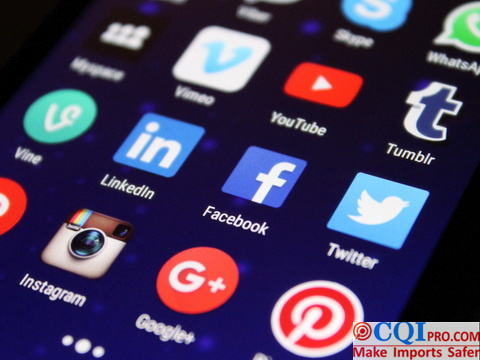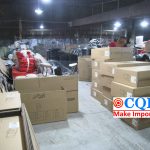Procurement And Quality Inspection,How To Reduce The Risk Of Bribery
“Seeking a buyer in China for new product sourcing and quality inspection.” This is a job posting by an importer on linkedin. When I saw this job posting, I was in contemplation: is sourcing so great nowadays? In addition to getting the purchasing done, he can even take quality inspections. Although I have hardly come across such talent and will not deny his existence. But the first point to clarify is that sourcing and inspection are two completely different types of work, even if they are both part of international trade. An experienced importer reading the full analysis must be well aware of this.
Differences Between Procurement And Quality Inspection
Functional content
Sourcing: Whenever an importer needs to expand its market share, the launch of new products is indispensable. This is the time for buyers to find the right suppliers in China. Identify suppliers that offer cost-effective products in well-connected regions and keep sourcing costs within budget. The head office also needs to confirm samples of the product before they can go into mass production. So buyers need to visit the factory to check the quality of the product and report to the head office.
Quality inspection: Quality inspection is always present, from the initial confirmation of samples to the final product. The person in charge of inspection must have a full set of product knowledge, such as the differences between various raw materials, special processes between different products and potential quality risks in the production process. Ultimately, the theory is put into practice and quality defects are detected in time to avoid consumer complaints before the product is shipped.
Functional purpose
Sourcing: China is a large manufacturing country with a wide variety of products and different industrial chains in different regions. Sourcing can help importers improve their supply chain system and select suppliers that work well together. Ultimately, this can help to minimize purchasing costs and increase sales.
Quality inspection: also helps importers to improve their supply chain system, but inspection can be a product perspective and can be a survival of the fittest factory. Weeding out unqualified factories from the supply chain system. This is more straightforward because product quality is the basis for high profits for the importer and is also the basis for judging the company’s development.
Work efficiency
Sourcing: the work of procurement staff is mainly in communication and organization. As they need to face different suppliers, they determine the purchasing details through phone, video and face-to-face communication. Then the purchasing plans, product costs and supplier comparisons, etc., are collated and entered into the system. Of these, the time cost of communication is the most unpredictable, which can greatly affect productivity.
Quality inspection: inspections deal with products all the time and their efficiency is lost in the distance. This is because it is a mistake to rely solely on the samples sent by the factory as a basis for quality control. Just think about it, of course the factory will pick the sample without any defects and send it to the importer. So the importer is not fooled and arranges for a quality inspector to go to the factory to check the quality of the product. But the importer forgets that factories are often built on the outskirts of cities, far away from cities, and the inspector must spend a lot of time on the road. The long distance and the time spent on the road is the biggest factor affecting the efficiency of the inspection.
Difficulty of work
Purchasing: the most important functional requirement of purchasing is cost control. When a particular factory offers a low cost product and its quality is not as good as it should be. It is then difficult for the buyer to convince the factory to improve the quality of the product. This is because the buyer does not have comprehensive product knowledge and does not understand the process of the product and is unable to ask the factory at a higher level. In the end, the only way to get the product quality to meet the sales requirements is by increasing the purchasing cost. It is also contrary to the initial purchasing function.
Quality inspection: In the inspection industry, there is a term called “supplier inspection”, which is simply a photo of the product and its basic dimensions. This type of inspection can be done in less than 10 minutes. If this is what the importer wants, then it is perfectly possible to purchase and do a quality inspection at the same time! But this is really a useless exercise and does not reflect the value of the existence of the product quality inspection for the bulk at all.

The difficulty of inspection work is twofold: first, there is so much knowledge in inspection, enough for a university graduate with an undergraduate degree to study for a whole year! Obviously, this is not something a procurement person can fully learn by taking a little time. The second is the meticulous nature of the quality inspection. Not only the appearance of the product, the functional testing of the product is the most important. It is also required to be able to check and evaluate product quality from the consumer’s perspective. This has always been the CQI’s consistent inspection philosophy
After this analysis, if there are still people who think that there is not much difference between purchasing and quality inspection, then please read on!
Procurement And Quality Inspection,The Possibility Of Bribery
Bribery is a word that everyone knows by heart, but doesn’t want to say explicitly. No executive would want an employee under his or her thumb to show favoritism and do something that is detrimental to the company. So how do you avoid this situation? I’m sure it’s clear to executives that by dividing up the functions and having limited rights for each function, we can reduce the likelihood of bribery. In this article, I certainly use the job of procurement as an example.
The function of procurement has also been explained earlier. On the eve of cooperation with a factory, a lot of procurement will be fair and impartial attitude, after all, he does not know these factories, do not dare to easily accept bribes. And once the factory and establish a long-term cooperative relationship, and also responsible for the quality inspection, to determine the product is not much of a problem, the face of bribery will not cover up. After all, he has two jobs, the factory understands that this is a key person, the hands of power is not small, and how not to bribe him?

However, if procurement is not responsible for quality inspection, it is also necessary to discuss with the head office to compare factories based only on the price of the product. A smart factory will not do anything against itself, which makes procurement only serious and responsible to continue to find a suitable factory. And who is going to do the inspection?
The size of the importer’s company determines hiring
Since it is unreasonable for procurement to be a quality inspection, where should inspection go from here? It’s not difficult, and there is a response in terms of the size of your company. The first is a small importer company. Due to financial constraints, the importer will hire a sourcing person in China to help him with the purchasing process. But with just one buyer, the sourcing job is already overwhelming, so don’t leave the inspection to him! At this point, you can consider third-party inspection companies, as long as they are reasonably priced, to try. The result is not only no delay in procurement, but also no significant cost of inspection, and even improved inspection efficiency.
Next are medium-sized importer companies. These companies already have the idea of setting up a sourcing office in China and want to recruit their own inspectors. There is certainly some rationale for this approach. Purchasing and inspection are also performed separately. But 1-2 inspectors are not enough, their scope of inspection is very limited and inefficient. See another article for more details How Importers Manage Inspectors in Purchasing Offices. Large importer companies, needless to say, are well-funded and can either use their own inspectors or work with third-party inspection companies.
CQI Inspection’s Comments And Summary
Reading this, There is also an answer to the question of whether the inspection can be accomplished with just one purchasing person. Sourcing and inspection, although they are linked, are not something that one person can do completely. After writing this article, I replied privately to the importer on Linkedin and told him he could repost a job posting. Shortly after, he recruited an experienced buyer and placed an inspection order with CQI. For me, the initial goal was just to help him recruit a buyer as soon as possible, but I was thinking about the inspection later.

The purpose of this article is also to help importers distinguish between sourcing and inspection, as most importers are well aware of what sourcing is. But inspection varies from person to person. Inspection is also not as simple as the importer thinks, and the different inspection costs represent the amount of work it takes. The cheaper the offer, the more careful you have to be, in particular to screen out whether such an inspection will help to reduce the potential risk of the product.
CQI5 is committed to providing importers worldwide with product quality inspection services that far exceed those of our peers. If you are planning to import or have imported from China or Southeast Asian countries, please contact us cs’@’cqipro.com to learn more about how we can make your imports safer.
This article is an original article for CQI Inspection, who is committed to providing high-quality product inspection technology and know-how sharing for global importers and retailers to make imports safer.
All rights reserved. The contents of this website provided by CQI Inspection may not be reproduced or used without express permission.
For reprint, please contact with CQI Inspection, thank you.





